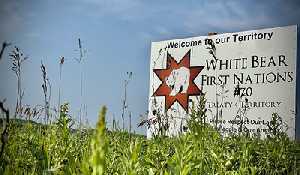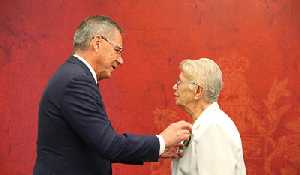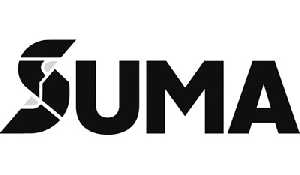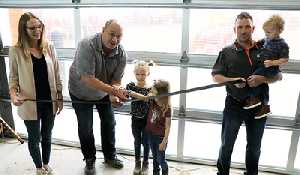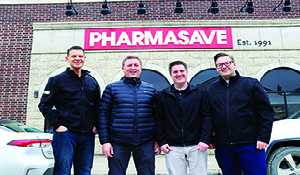Bobby Stevens rodeo career: From bull riding to raising rodeo bulls
July 7, 2018, 8:00 am
Kevin Weedmark
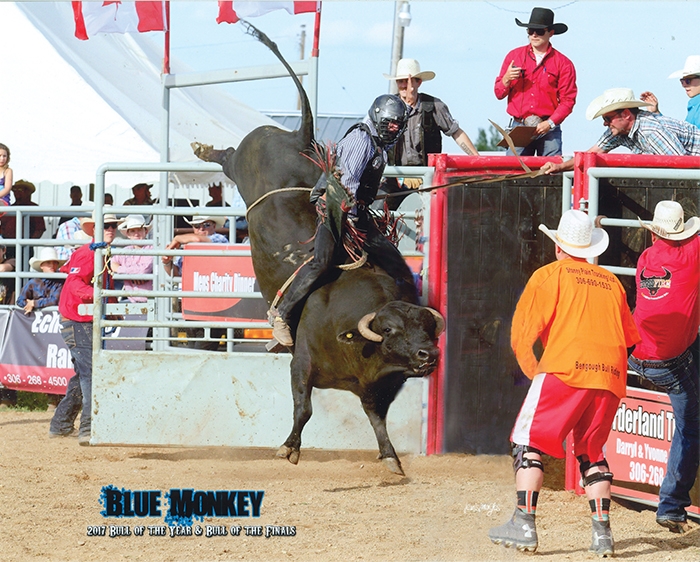

Bobby Stevens is a member of the Moosomin Rodeo Committee whose involvement with rodeo ranges from riding bulls at the Calgary Stampede to raising rodeo stock.
He sat down for an interview with World-Spectator editor Kevin Weedmark last week about his career in rodeo.
Tell me about your rodeo career.
I’ve rodeoed since ‘93. I started when I was 12-years-old. I started riding steers. I did that for six years. Then when I was 16 I started riding bulls and did that for 12 or 13 years, and I was fortunate enough to ride in the Calgary Stampede. I was a four time MRCA champion, 12 time CCA finals qualifier, four times Professional Canadian Bullriders finals qualifier, and competing at the Calgary Stampede.
What was the highlight of your bullriding career?
Riding at the Calgary Stampede was pretty key—that was 2002.
That was pretty cool—I got to ride on the big stage I guess you would say.
I rode a few of the better bulls in Canada back in 2004-05. Riding those key bulls was sure good because there were only a few of us in Canada that rode those kinds of bulls.
I never made the CFR, the Canadian Finals Rodeo, which is too bad. I sure wish I could have, but I never did.
But I was fortunate to be able to stay on a couple of those good ones that only the best guys in Canada could.
What kind of training and work goes into being a bull rider?
It’s a lot different nowadays than when I was going.
A lot of the bull riders nowadays are almost athletes, especially at the professional ranks. They hit the gym once or twice a day.
When I was going a guy was working and doing whatever—no one went to the gym.
Nowadays it’s more of a business in the professional ranks because there is so much money to be won.
With that being said, you get out of it what you put into it. It’s not like any other professional sports. If you are a baseball or hockey player and you are in a slump you are getting that salary anyway.
As a rodeo contestant, if you’re in a slump and you don’t compete well, you don’t win any money, and the money is still coming out of your account to pay your entry fees and get up and down the road. So you got to take care of business, and that’s in all of the seven rodeo events. If you don’t take care of business there is very little money to be made in the sport to be brutally honest.
How did you get into bull riding in the beginning?
I’m originally from Bengough, and that was just kind of the thing everybody did there. It was a small town, and there were a dozen of us riding steers. That’s pretty good considering there were only maybe 40 kids in that age group in the whole community. It was just what everybody did.
I moved to Moosomin in 2006 and rodeoed out of Moosomin, and then in 2011 I called it quits on the bull riding part and started working with the bulls. In 2014 I got hired by Prime Time Rodeo which is the contractor for the Moosomin Rodeo, and I supply bulls for the rodeos they do. With bull riding events we pretty much go somewhere every weekend during the summer and fall. We ranch raise quite a few of our bulls and we buy the odd bull.
There are 20 that go on the road. Those are three-year-olds and up, and there are some two-year-olds and yearlings that are up-and-comers and part of the breeding program.
You’ve won some awards with your bulls . . .
We were fairly fortunate. We won the CCA bull of the year last year with a ranch raised bull that we call Blue Monkey. I was fortunate enough to win bull of the year with him and then he ended up winning bull of the CCA finals which is pretty cool. Bull of the Year is good, but I’m pretty proud of the Bull of the Finals because they take 55 of the best bulls in the association to the finals and he was the best bull that weekend, so he had good competition, and being ranch raised means a little more too.
We were fortunate enough to win Bull of the Year in the Manitoba Rodeo Cowboys Association and that was with the bull called Brindle Bob. He is just a nice draw. Guys really like getting on him, he’s a money bull, they win money on him every time they stay on him.
Was it hard to get established in the rodeo stock business?
When I got started I was fortunate to have Ken Bonkowski own a share of some bulls up this year. His contribution made a big difference. He helped a lot.
I also need to thank 3M Beef Supply in Moosomin and Farm Boy Realty. They jumped on board with me in 2014 and they’ve been supporting me right through until this current year. I really appreciate their support.
What makes a good rodeo bull? What sort of traits are you looking for?
It’s getting to be more like the horse race business. The genetics mean everything. 20-30 years ago you could possibly find a rodeo bull out in your pasture, but nowadays very seldom do you see an Angus or Charolais in the rodeo ring. Everything is bred to do it and they have got to have some life to them.
How do you develop a rodeo bull?
When they are young, when they’re a yearling, we bring them in and put them in the chutes and settle them down. When they are young and first start they are almost like a wild animal and you want to calm them down. You want to show them all the atmosphere they could see as they get older.
The calmer they can be, the better they do. If they are worked up they are going to be tired before they open the chute on them.
We train them. There’s a 14 pound dummy we put on them as a yearling and two-year-old and it’s remote controlled and that kind of tells us how they’re going to perform.
Some bulls are late bloomers, they don’t figure it out until they’re three or four years old and then some bulls are not cut out for it.
That’s pretty much it—just working with them and handling them and putting trips on them with the dummies and trying to expose them to other events. When they are three-year-olds, they maybe go to three rodeos a year because they are inexperienced and immature.
How much time do you put into this over the summer?
We’re away every weekend during the summer and fall. We rodeo for about four months straight. It’s a family deal. My wife Leah and my two kids go 70 per cent of the time and they enjoy it. It’s pretty much a family deal—it’s what we do for fun.
How far do you go on the rodeo circuit?
We venture east of Winnipeg and go to a couple events out there, and we go to Lloydminster for bull riding finals in the fall, and Swift Current is where they have the Canadian Cowboys Association Finals, so we go there every year with a load. We’re very fortunate we supply stock to the Moosomin Rodeo and Wapella Rodeo, Virden Rodeo, Spy Hill Rodeo. We’re very fortunate that a lot of our work is right close—very fortunate.
Is the rodeo circuit getting busier? I know Spy Hill just became a full fledged rodeo last year—are a lot more communities joining the rodeo circuit?
It kind of evens out—for every one that starts, one might not keep going. They are an expensive thing to put on and it’s just like any other community event—volunteers are very crucial, and if your community is not behind it, you don’t have the volunteers or the sponsorship dollars. I know from rodeoing there are a lot of old time rodeo committees that the average age of the committee members is 65-plus and they can’t get younger people to volunteer.
That isn’t the case in Moosomin—what’s different here?
We’ve got a good, young base of committee members. I think everybody wants to jump on board and put on an event that Moosomin can be proud of.
Our rodeo, I would say, is one of the better ones in the Canadian Cowboys Association.
The contestants like coming here. We have good added money for them, so it’s worthwhile them coming here.
Three years ago we were runner up for rodeo of the year in the Canadian Cowboy Association, which is a pretty good feat because they sanction 60 rodeos. Moosomin should be proud of that.
When you take the bulls to the rodeos or are working on the committee of the rodeo, do you actually get to enjoy the rodeo?
I really enjoy that part of it, working with the stock and doing a little bit of the committee stuff.
During the actual rodeo performance my main key is taking care of my bulls. That is what I’m paid there to do. As soon as the rodeo performance is over then I’ve got to go back to being a committee guy. I get to see most of the rodeo because I’m in there doing work with the stock, and I enjoy it. I do it every weekend—I wouldn’t if I didn’t enjoy it.
Are you looking forward to the Moosomin Rodeo this year?
I think it will be good. The 25-year feat is pretty good for a small town.
The committee has come a long way and the rodeo has come a long way.
I remember riding here in ‘96. That would have been the third rodeo Moosomin would have had, and it sure has come a long way. There wasn’t a whole lot down there other than a dirt patch.
We’ve got bands coming both nights, and the addition of the kids’ rodeo will be great.
If you want to come down to the grounds and see a full day of rodeo action, the slack starts at 9, which is free admission, and that goes to before noon, then at noon the kids’ rodeo starts, and that will run for about two and a half to three hours. Then at 3:30 the Moosomin Rodeo Idol is at the beer gardens. That goes to pretty much to an hour before the rodeo, then the rodeo and then the cabaret right after the rodeo.
There is a little of something for everybody to come check it out and come down. The CCA rodeo in the evening is the only thing you have to pay to get into. Everything else is free to come check it out, have a beer and hamburger and support the community.
